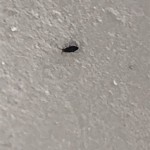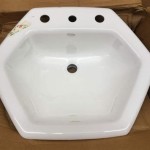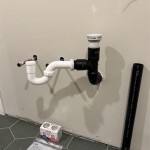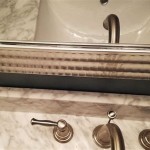Why Is There Black Stuff On My Bathroom Ceiling?
The appearance of black spots or patches on a bathroom ceiling is a common household concern, often prompting immediate worry. Identifying the culprit behind this unsightly discoloration is crucial for effectively addressing the problem and preventing its recurrence. The most likely cause is mold growth, specifically black mold, although other contributing factors can also play a role. This article will delve into the reasons behind this phenomenon, exploring the specific conditions that foster the growth of black substances on bathroom ceilings and outlining potential solutions.
It's important to note that while the term "black mold" is frequently used, it often refers to *Stachybotrys chartarum*, a specific type of mold known for its dark color and association with water damage. However, various other mold species can also appear black or dark green, and it can be difficult to visually identify the specific type without professional testing. Regardless of the exact species, the presence of any mold on a bathroom ceiling indicates an underlying problem with moisture and ventilation. Addressing the underlying issue is paramount to successful remediation.
Key Point 1: The Role of Moisture and Humidity
Bathrooms, by their very nature, are environments prone to high levels of moisture and humidity. Showers, baths, and even handwashing activities release significant amounts of water vapor into the air. Unless adequately ventilated, this moisture can linger, creating ideal conditions for mold growth. Mold spores, ubiquitous in both indoor and outdoor environments, require moisture to germinate and thrive. The damp surface of a bathroom ceiling, often cooler than the surrounding air, provides a perfect landing spot for these spores. Condensation readily forms on the ceiling, providing the necessary water for mold to establish and spread.
Furthermore, leaks, whether from the roof, plumbing fixtures, or adjacent rooms, can introduce excessive moisture into the bathroom. These leaks may not always be immediately apparent, allowing moisture to accumulate behind walls or above ceilings, creating a haven for mold. Even seemingly minor leaks, such as a dripping faucet or a poorly sealed shower door, can contribute to elevated humidity levels and persistent dampness, fostering mold growth over time. Identifying and repairing any leaks is a crucial first step in addressing mold problems in the bathroom.
Beyond leaks, improper construction or insulation can also contribute to moisture problems. Inadequate insulation in the ceiling can lead to significant temperature differences between the bathroom and the space above, resulting in increased condensation. Similarly, improperly installed vapor barriers can trap moisture within the ceiling cavity, creating a perpetually damp environment conducive to mold growth. In such cases, addressing these structural deficiencies may be necessary to prevent recurring mold issues.
Key Point 2: Inadequate Ventilation
Ventilation plays a critical role in removing moisture from the bathroom and preventing the buildup of humidity. Without adequate ventilation, the moisture released during bathing and showering remains trapped, saturating surfaces and providing a breeding ground for mold. Bathroom exhaust fans are designed to address this issue, but their effectiveness depends on several factors, including their size, location, and usage habits. A fan that is too small for the size of the bathroom will not be able to adequately remove moisture, while a fan that is not used consistently will fail to prevent humidity buildup.
Furthermore, the placement of the exhaust fan is important. Ideally, it should be located near the shower or tub, where the majority of moisture is generated. If the fan is located too far away, it may not effectively capture the moisture before it disperses throughout the room. Additionally, the exhaust fan must be properly vented to the outside of the house. If the fan vents into the attic or another enclosed space, the moisture will simply circulate within the building, potentially causing problems elsewhere.
Beyond exhaust fans, natural ventilation, such as opening a window, can also help to reduce humidity levels in the bathroom. However, relying solely on natural ventilation may not be sufficient, especially during periods of high humidity or in climates with limited airflow. A combination of exhaust fans and natural ventilation is often the most effective approach for preventing moisture buildup. Regular cleaning of the exhaust fan is also important to ensure its continued effectiveness. Dust and debris can accumulate on the fan blades and housing, reducing airflow and diminishing its ability to remove moisture.
Key Point 3: Other Contributing Factors
While moisture and ventilation are the primary drivers of mold growth on bathroom ceilings, other factors can also contribute to the problem. The type of paint used on the ceiling can influence its susceptibility to mold. Some paints are more porous than others, allowing moisture to penetrate and create a favorable environment for mold growth. Paints specifically formulated for bathrooms often contain mildewcides, which inhibit mold growth. Using such paints can provide an extra layer of protection against mold.
The cleanliness of the bathroom can also play a role. Soap scum, hair, and other organic matter can provide a food source for mold, accelerating its growth. Regular cleaning of the bathroom, including the ceiling, can help to remove these food sources and prevent mold from establishing itself. Using a mild bleach solution or a commercially available mold cleaner can be effective for removing mold and preventing its recurrence. However, it is important to follow the manufacturer's instructions carefully and to wear appropriate protective gear, such as gloves and a mask, when working with bleach.
Finally, the overall condition of the building can influence the likelihood of mold growth. Homes with poor drainage, leaky roofs, or other structural problems are more prone to moisture issues, which can extend to the bathroom. Addressing these underlying issues is essential for preventing widespread mold problems. In some cases, it may be necessary to consult with a professional contractor or mold remediation specialist to identify and address the root cause of the problem.
In summary, the black stuff appearing on a bathroom ceiling is most often mold, fueled by a combination of moisture, inadequate ventilation, and other contributing factors. Identifying and addressing the underlying causes of moisture buildup is crucial for effective mold remediation and prevention. This may involve repairing leaks, improving ventilation, using mold-resistant paints, and implementing regular cleaning practices. In severe cases, professional assistance may be necessary to ensure thorough mold removal and prevent recurrence.

Black Spots On The Bathroom Ceiling Flood Water Damage Honolulu Oahu Hawaii Md Restoration

Ceiling Mold Growth Learn The Cause And How To Prevent It Environix

How To Clean Black Spots In The Bathroom Family Handyman

Ceiling Mold Growth Learn The Cause And How To Prevent It Environix

How To Get Rid Of Mold On Your Bathroom Ceiling Aqa

My Bathroom Ceiling Has Black Mould Growing On It What Should I Do

My Bathroom Ceiling Has Black Mould Growing On It What Should I Do

Ceiling Mold Growth Learn The Cause And How To Prevent It Environix

Black Mould Removal The Right Way

Ceiling Mold Growth Learn The Cause And How To Prevent It Environix
Related Posts







